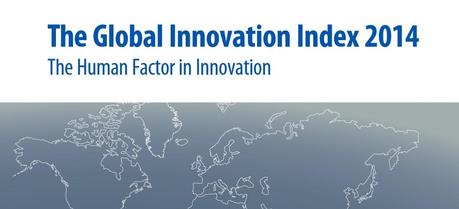 Global Innovation Index 2014: The world’s top-3 innovative economies are: Switzerland, UK and Sweden
Global Innovation Index 2014: The world’s top-3 innovative economies are: Switzerland, UK and SwedenThe Global Innovation Index 2014, co-authored by Samuel Curtis Johnson Graduate School of Management Dean Soumitra Dutta, was released in Sydney, Australia, July 18 at the B20 international business summit.
The report shows European countries as the world’s most innovative and finds encouraging signs from sub-Saharan Africa.
SEE ALSO: Night-Time Lights Intensity Indicates Regional Favoritism

Soumitra Dutta, dean of the Samuel Curtis Johnson Graduate School of Management. (Credit: Robert Barker / Cornell University)
The Global Innovation Index (GII) is a benchmarking tool for business executives, policymakers and others seeking insight into the state of innovation around the world. It is co-published by Cornell University, INSEAD and the World Intellectual Property Organization, an agency of the United Nations.
The study, in its seventh year, surveys 143 economies using 81 indicators to gauge their innovation capabilities and measurable results.
“When reviewing the GII quality indicators, top performing middle-income economies are closing the gap with high-income economies,” Dutta said. “China significantly outperforms the average score of high-income economies across the combined quality indicators. To close the gap even further, middle-income economies must continue to invest in strengthening their innovation ecosystems and closely monitor the quality of their innovation indicators.”
Switzerland, the United Kingdom and Sweden topped the 2014 GII, while sub-Saharan Africa posted significant regional improvement. Switzerland remains the leader for the fourth-consecutive year. The United Kingdom moves up a rank to second place, followed by Sweden. A new entry into the top 10 this year is Luxembourg, ranked ninth. The middle-income economies are led by China, followed by Brazil and India.
Top 10 most innovative economies:
1. Switzerland (No. 1 in 2013)
2. United Kingdom (3)
3. Sweden (2)
4. Finland (6)
5. Netherlands (4)
6. United States (5)
7. Singapore (8)
8. Denmark (9)
9. Luxembourg (12)
10. Hong Kong (7)
The GII 2014 confirms the persistence of divides in global innovation. Among the top 10 and top 25 economies, the rankings have changed but the list remains otherwise unaltered. A divide exists where less innovative economies have difficulty keeping up with the rate of progress of higher-ranking economies, even when making gains themselves. This can be partially explained by their difficulties in growing and retaining the human resources necessary for sustained innovation, which is the focus of this year’s report.
Among low-income countries displaying above-par performance, the sub-Saharan African region now makes up nearly 50 percent of the so-called “innovation learner” economies, defined by the report’s authors as those that perform at least 10 percent higher than their peers for their level of gross domestic product.
Sub-Saharan Africa now has more “innovation learner” economies than any other region, with five countries joining that status in 2014: Burkina Faso, Gambia, Malawi, Mozambique and Rwanda. These economies demonstrate rising levels of innovation, particularly in human capital, research and market sophistication.
Complete rankings, analysis and the full Global Innovation Index 2014 report are available online.

